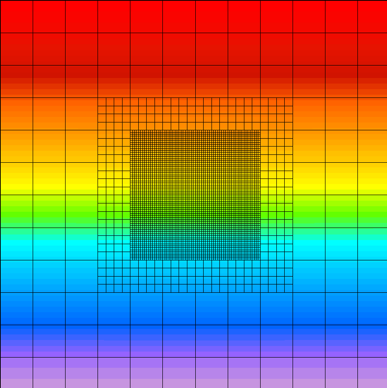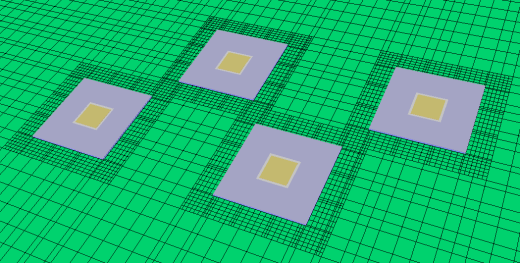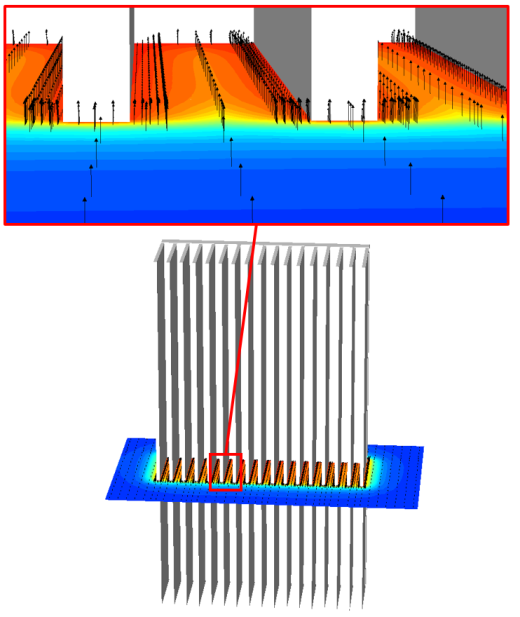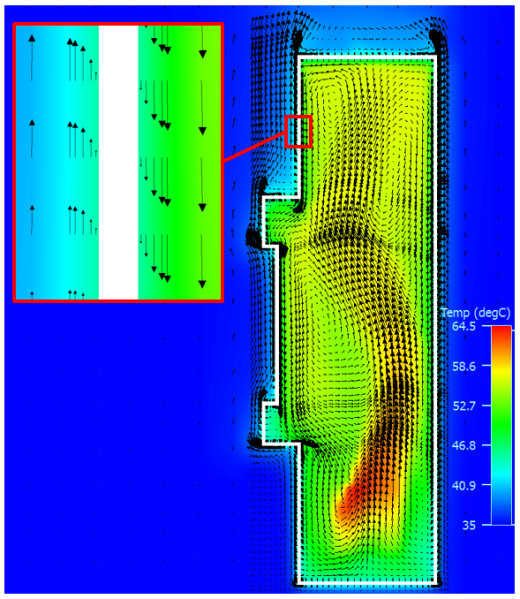Top 7 FloTHERM V11 Features – #5: Overlapping Localized Grid
A grid (mesh) defines a tessellated collection of small volumes that cover the 3D volume of space that is to be simulated using CFD. The governing equations are integrated (discretized) over these volumes and solved iteratively until they those equations are satisfied. Out of the process comes predicted values of temperature, pressure, velocity etc. at each of those grid cells. These grids are important both for simulation accuracy and also for numerical solution stability. If your mesh is too fine your solution will take too long (e.g. weeks) with little increase in accuracy. If your mesh is too coarse you will get wrong results very quickly. This balance between speed and accuracy is a recurring theme in CAE approaches.
 FloTHERM has had a ‘localized grid’ capability since V4. This allows a region of the model to have a finer mesh than the background (parent) mesh that it sits in. A Cartesian chimera or over-set meshing approach, it is particularly well suited to electronics cooling applications that are typified by sudden changes in geometry length scales (microns thick die in a cm big package in a m long enclosure). In previous version these localized grid spaces were not allowed to overlap (if that happened, one of them automatically ‘un’-localized resulting in very high mesh counts). FloTHERM V11 now supports overlapping localized grids.
FloTHERM has had a ‘localized grid’ capability since V4. This allows a region of the model to have a finer mesh than the background (parent) mesh that it sits in. A Cartesian chimera or over-set meshing approach, it is particularly well suited to electronics cooling applications that are typified by sudden changes in geometry length scales (microns thick die in a cm big package in a m long enclosure). In previous version these localized grid spaces were not allowed to overlap (if that happened, one of them automatically ‘un’-localized resulting in very high mesh counts). FloTHERM V11 now supports overlapping localized grids.

The ability to pre-mesh a part to the desired resolution, put it in a FloTHERM library, then retrieve by dragging and dropping into any model, preserving that mesh refinement, will make the model building and meshing process more robust and much faster.
Overlapping localized grid is particularly well suited to boundary layer resolution. Near the wall, there are large normal gradients in fluid velocity that have to be resolved well for accurate prediction of wall shear stress and thus heat transfer (the Reynolds analogy). For electronics cooling applications this is especially true for heatsink fins and enclosure walls where the heat transfer at the solid/fluid interface is a critical part of the entire heat flow path (from die to ambient):
The boundary layers can be resolved using the same mesh resolution over all surfaces of a heatsink:
 Actually, in my experience, it’s surprising how coarse a mesh can be in the bulk flow and still produce accurate results so long as the mesh is fine enough to accurately predict the heat transfer through the boundary layer (though of course there are exceptions to every rule!).
Actually, in my experience, it’s surprising how coarse a mesh can be in the bulk flow and still produce accurate results so long as the mesh is fine enough to accurately predict the heat transfer through the boundary layer (though of course there are exceptions to every rule!).
30th November 2015, Ross-on-Wye.




